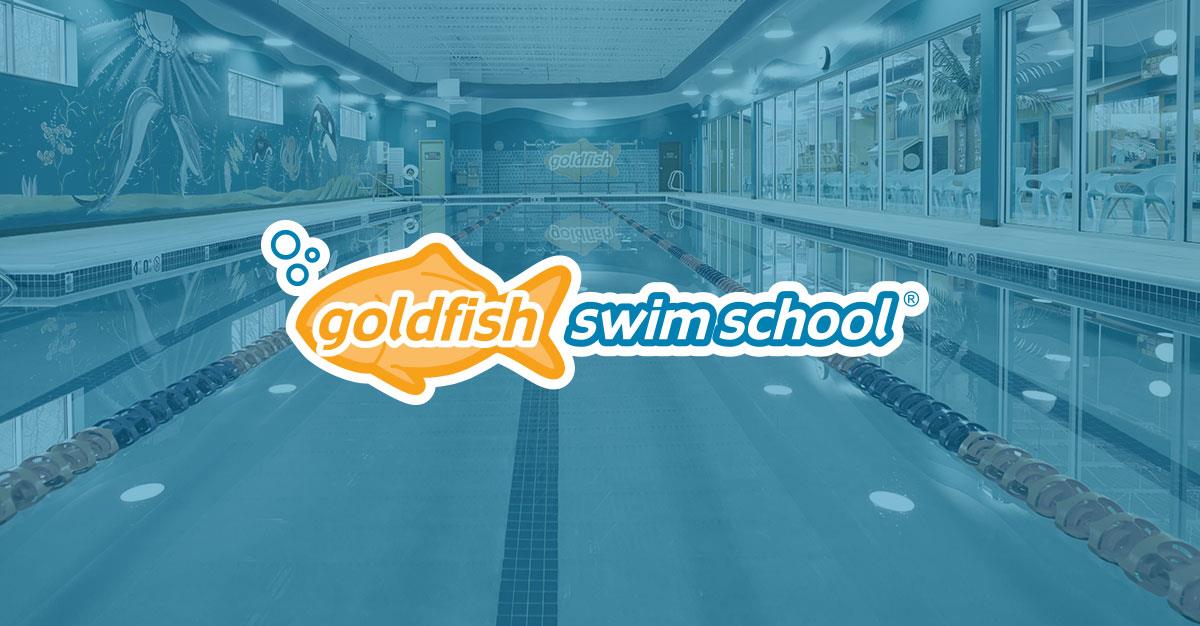Are Floaties Safe?

Before you buy for swim season, learn the safest options for water play.
As we prepare for another fun beach and pool season in Cleveland, parents are likely seeing a range of floatation devices and other pool toys and props in the stores and at pools in their neighborhood. What’s safe? What’s not? What do parents need to keep in mind when it comes to deciding whether to allow their child to use these various devices? Sonali Morris, the owner of two area Goldfish Swim School locations, provides her perspective on what parents should be using this season to the readers of Northeast Ohio Parent magazine.
Should my child learn to swim while wearing a life jacket, puddle jumpers or water wings on?
When your child is learning to swim with a qualified swimming instructor, personal flotation devices are not needed. We believe that learning to swim without some sort of flotation device actually helps kids build their confidence in the water quicker. Those bulky devices can hinder proper swim movements and progress. Water wings aren’t U.S. Coast Guard-approved flotation devices and they can slip off or leak air. The same goes for those bathing suits with the floaty built in: It can ride up and not provide the safety you expect it to.
When should my child wear a life jacket while swimming?
When to put your child in a life jacket while swimming at the beach or a pool is your decision, since you – as the parent– know your child best. Factors to consider include your child’s swimming ability, pool vs. open water such as an ocean or lake and the constant supervision you’ll be providing (right there next to her, or watching from a few feet away).
When does my child need to wear a life jacket on a boat or other water vessel?
Even if your child knows how swim, accidents can happen on a boat that render your child unconscious or unable to use his or her swim skills – so a life jacket must ALWAYS be worn on a boat. Laws vary by state, but generally if your child is younger than 13, is above deck and could potentially land in the water – either accidentally or on purpose – he or she needs a U.S. Coast Guard-approved life jacket. We recommend that everyone wear a lifevest regardless of age and swim ability. Better to be safe.
What type of life jacket should my child wear?
It can be confusing when you go to the store to buy a life jacket for your child and there are different types, but it’s vital the life jacket you use has the USCG approval on it – AND the life jacket must fit your child properly right now (not when he or she grows a little bit!). The fit matters because if your child’s head or ears can slip down beneath the life jacket, the device won’t be able to work as designed to keep the child’s head above water and allow for proper breathing.
Are mermaid tails safe for kids to use in public pools?
We recommend not allowing the use mermaid tails and similar ‘mono-fin’ appendages in public pools. Even their manufacturers state that they require you to be a strong swimmer in order to use them safely. At a busy pool environment, testing who is and who is not able to swim with a tail is a difficult thing for lifeguards and staff to do. In addition, aquatic safety isn’t just about any one individual—these tails are bulky and hard to control and there is a risk that they could strike other swimmers.
What are your thoughts on puddle jumpers?
Puddle jumpers (as long as they are USCG approved) work better in the pool where the water is more controlled and a responsible adult is close by. Just be very vigilant as they can slip off the arms of children who don’t meet the weight requirements. However, for boating or open water, a child should be wearing a USCG-approved life jacket as they offer the most safety.
Sonali Morris is the mother of two competitive swimmers and the owner of Goldfish Swim School Cleveland East Side and Goldfish Swim School Fairview Park. Goldfish Swim School provides swim instruction to children ages 4 months to 12 years in a unique setting with highly trained instructors, small class sizes (max 4:1 student-teacher ratio), shiver-free 90-degree pools, and a state-of-the-art water purification system.

